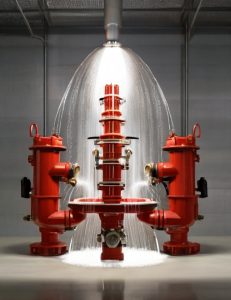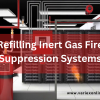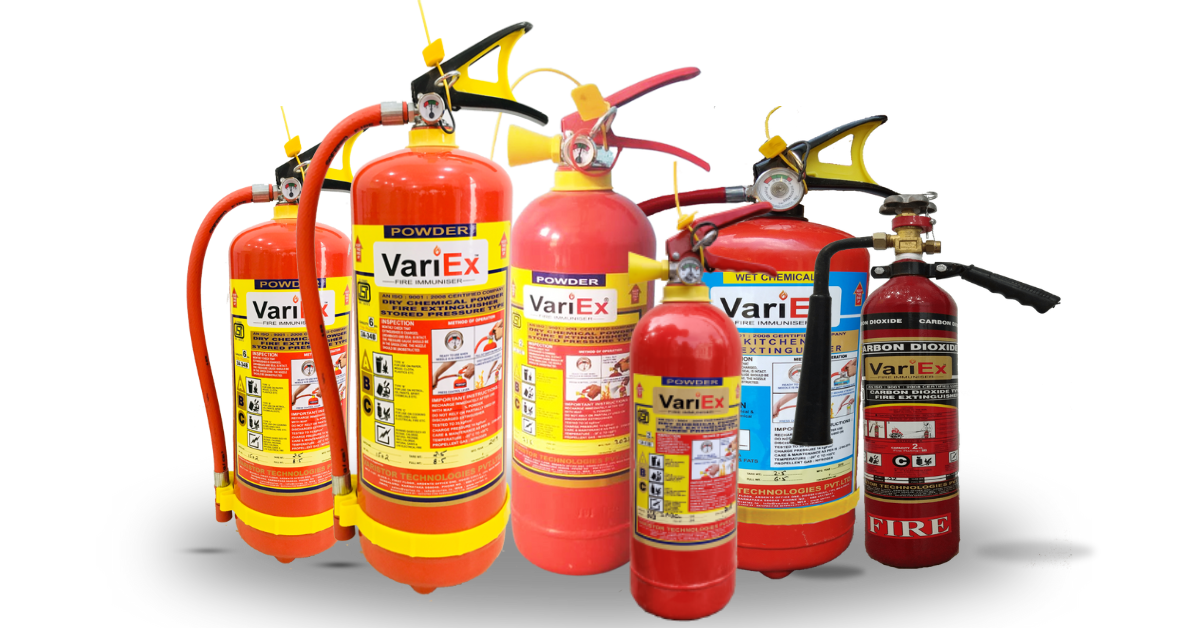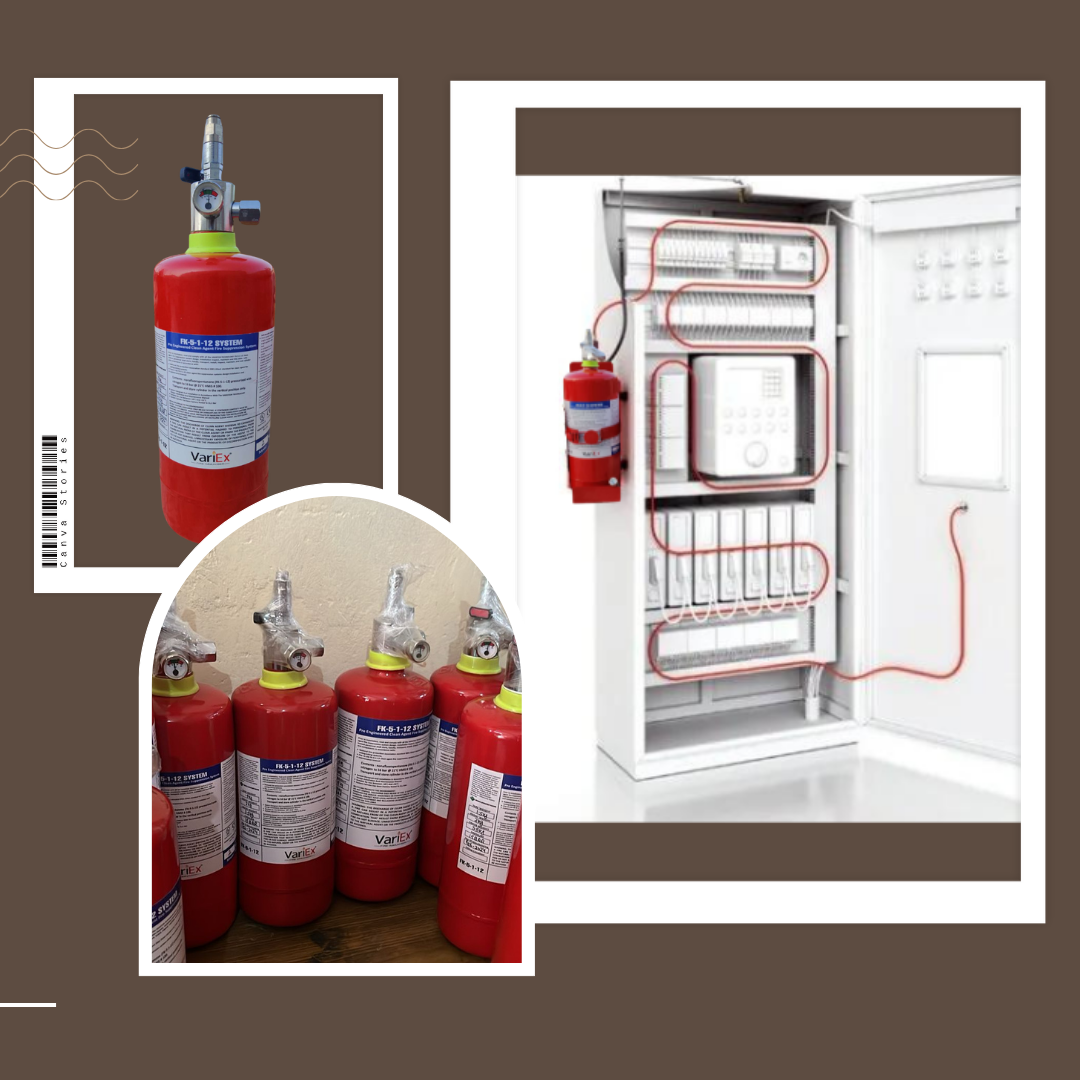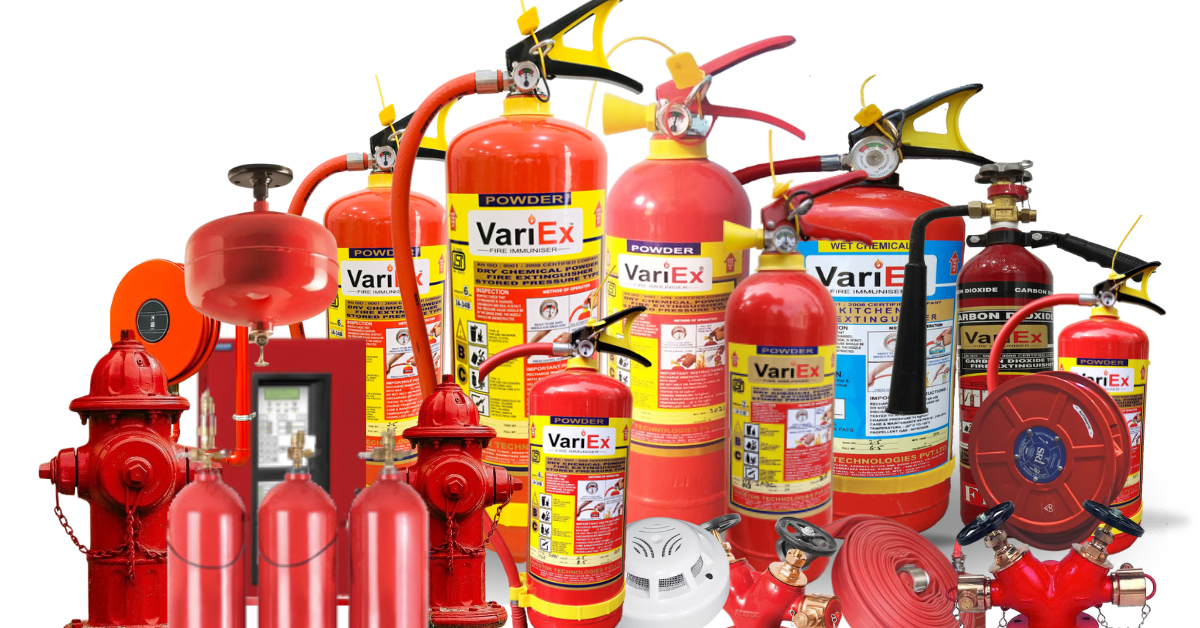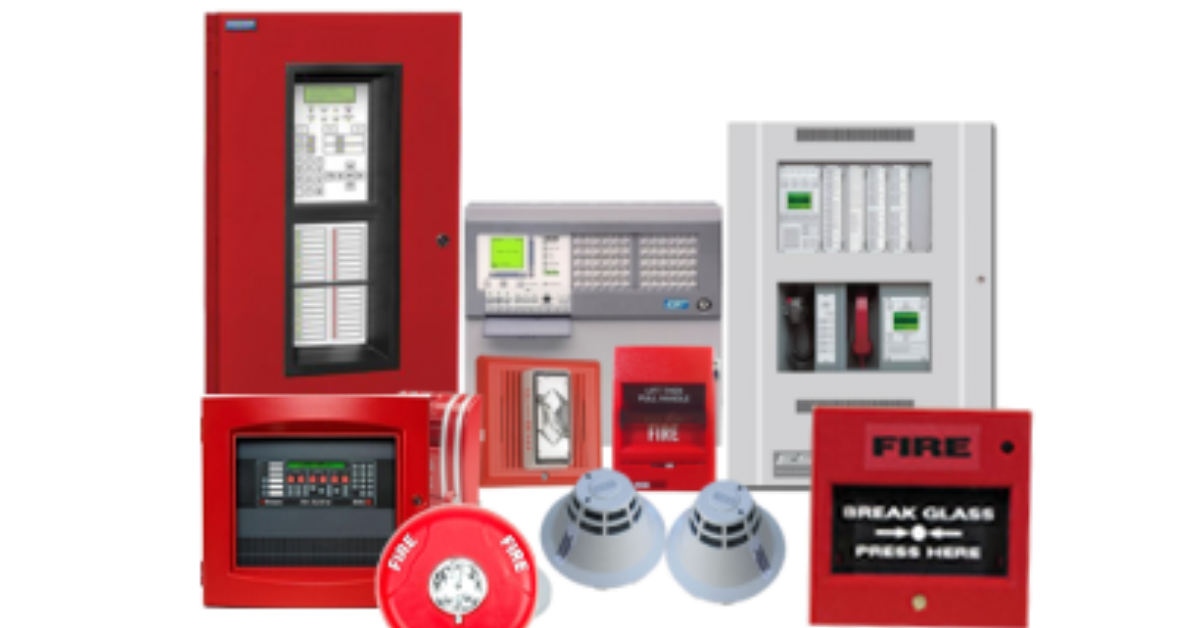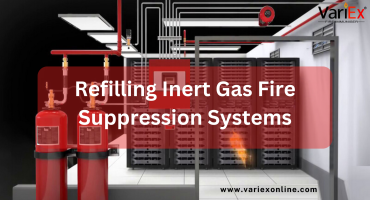![]()
Fire Immuniser
+91-7829629111
Email: info@variex.in
Varistor Technologies Pvt. Ltd.
Block-1, First Floor, Ardente Office One, Hoodi Circle, ITPL Main Road, Bengaluru, Karnataka 560048, IN
How Many Types Of Fire Fighting System
Fire can be a devastating force, causing destruction and endangering lives in its path. Therefore, it is essential to have effective fire protection measures in place. One crucial aspect of fire safety is the presence of firefighting systems. These systems, designed to extinguish fires or control their spread, protect both people and property. In this article, we will explore the different types of firefighting systems available, highlighting their features and benefits.
1. Water-based Firefighting Systems:
Water-based firefighting systems are the most common and traditional type of fire protection. They utilize water as the primary extinguishing agent and come in various forms:
- Sprinkler Systems: Sprinkler systems are perhaps the most recognizable firefighting systems. These systems consist of a network of pipes with sprinkler heads strategically placed throughout a building. When triggered by high temperatures, the sprinkler heads release water to control or extinguish the fire. This proactive approach can significantly minimize fire damage and reduce the risk of injuries.
- Hydrant Systems: Hydrant systems employ a network of underground pipelines connected to hydrants at specific points. They serve as water sources for firefighters, often swiftly delivering water to the scene of the fire. These systems particularly benefit larger buildings or areas that sprinklers alone cannot adequately cover.
- Water Curtain Systems: Install water curtains as barriers to control the spread of fire or smoke. These systems release water in a curtain-like manner, thus obstructing flames, heat, and even toxic gases. Many use water curtain systems in warehouses, factories, or other spaces where compartmentalization is essential.
2. Foam-based Firefighting Systems:
Foam-based firefighting systems are highly effective for extinguishing flammable liquid fires. Foam agents, when mixed with water, create a thick foam that covers and suppresses the fire. Here are two commonly used foam-based systems:
- Foam Sprinkler Systems: Foam sprinkler systems, similar to water sprinklers, work by releasing foam instead of water. These systems are especially effective in extinguishing flammable liquid fires, such as those involving petroleum or chemicals. Applying specialized foam agents cools, smothers, and prevents the fire from re-igniting.
- Foam Deluge Systems: Design foam deluge systems to rapidly disperse a large amount of foam over a designated area. They operate similarly to foam sprinkler systems but are suitable for high-risk environments where a fast and efficient response is critical. Industries such as oil refineries or storage facilities often rely on foam deluge systems to combat catastrophic fires.
3. Gas-based Firefighting Systems:
Gas-based firefighting systems tackle fires by depriving them of oxygen, thus effectively extinguishing them. Here are two common types of gas-based systems:
- Carbon Dioxide (CO2) Systems: Carbon dioxide systems work by releasing a high concentration of CO2 into an enclosed space. As CO2 is a non-combustible gas, it displaces the oxygen needed for the fire to burn. Install these systems frequently in places containing electrical equipment or other valuable assets, as they leave no residue and minimize damage.
- Clean Agent Systems: Clean agent systems employ halogenated gases, such as FM-200 or Novec 1230, to suppress fires. These gases are electrically non-conductive and do not leave any residue after discharge. Clean agent systems are highly suitable for occupied spaces like data centers, museums, or hospitals, where damage caused by water or chemicals needs to be minimized.
Importance of Fire Fighting Systems
The importance of fire fighting systems is paramount in:
- Protecting Lives: The primary goal of any fire fighting system is to save lives by controlling and extinguishing fires quickly.
- Minimizing Property Damage: Effective fire suppression reduces property loss and can prevent catastrophic damage.
- Ensuring Compliance: Many jurisdictions mandate specific fire safety measures, including the installation of fire fighting systems.
- Business Continuity: By preventing extensive damage, fire fighting systems help businesses recover quickly and maintain operations.
Types of Fire Fighting Systems
Fire fighting systems can be broadly classified into several types, each designed for specific environments and fire risks. The main types include:
1. Water-Based Fire Fighting Systems
Overview
Water-based fire fighting systems are the most common and widely recognized methods for fire suppression. They use water as the primary extinguishing agent and are effective in a variety of settings.
Types of Water-Based Systems
1.1 Sprinkler Systems
Sprinkler systems consist of a network of pipes filled with water and a series of sprinkler heads installed throughout a building. When a fire is detected, the heat causes the sprinkler heads to activate, releasing water.
Wet Pipe Systems: These systems have pipes filled with water at all times. When a sprinkler head opens, water immediately flows out.
Dry Pipe Systems: Used in areas where freezing may occur, these systems contain pressurized air or nitrogen. When a sprinkler activates, the air is released, allowing water to flow.
Pre-Action Systems: These require two triggers—usually a fire alarm and the activation of a sprinkler head—to release water. They are ideal for sensitive environments like data centers.
Deluge Systems: In this system, all sprinkler heads are open, and when activated, a large volume of water is released simultaneously, making them suitable for high-hazard areas.
Advantages of Sprinkler Systems
- Automatic Activation: Sprinklers operate automatically, minimizing response time.
- Cost-Effective: Reduced property damage can lead to lower insurance premiums.
- Wide Coverage: Sprinkler systems can cover large areas with proper design.
Disadvantages
- Water Damage: While they suppress fires, sprinkler systems can also cause water damage to property.
- Maintenance Needs: Regular maintenance and testing are necessary to ensure functionality.
1.2 Water Mist Systems
Water mist systems use fine water droplets to cool flames and reduce oxygen concentration. They are effective for specific applications, including electrical fires and sensitive environments.
Advantages of Water Mist Systems
- Minimal Water Use: Water mist systems use significantly less water than traditional sprinkler systems, reducing water damage.
- Environmental Safety: They are environmentally friendly and leave no residue.
- Versatility: Effective in various settings, including industrial and commercial applications.
Disadvantages
- Initial Cost: The installation cost can be higher compared to conventional systems.
- Complexity: Requires skilled personnel for design and maintenance.
2. Foam-Based Fire Fighting Systems
Overview
Foam fire fighting systems are designed to combat flammable liquid fires by creating a barrier that suppresses vapor release and cools the fire. These systems are commonly used in industrial settings, such as oil refineries and chemical plants.
Types of Foam Systems
- Aqueous Film Forming Foam (AFFF): Effective for hydrocarbon fires, AFFF creates a film that prevents re-ignition.
- Protein Foam: Suitable for polar solvents, this foam is biodegradable and made from natural proteins.
- Synthetic Foam: Tailored for specific applications, synthetic foam can be highly effective for a variety of flammable liquids.
Advantages of Foam Systems
- Effective Against Flammable Liquids: Foam is more efficient than water for suppressing flammable liquid fires.
- Wide Range of Applications: Suitable for various industries, including aviation, marine, and chemical processing.
Disadvantages
- Storage Requirements: Foam concentrates require proper storage and handling.
- Cost: Foam systems can be more expensive to install and maintain.
3. Clean Agent Fire Suppression Systems
Overview
Clean agent systems use non-conductive gases to extinguish fires without leaving residue. These systems are ideal for protecting sensitive equipment in environments like data centers, museums, and hospitals.
Types of Clean Agents
- Halocarbon Agents: These are chemical compounds that effectively suppress fire without harming the environment.
- Inert Gases: Systems using gases like argon, nitrogen, or carbon dioxide reduce oxygen concentration to extinguish fires.
Advantages of Clean Agent Systems
- No Residue: Clean agents leave no residue, making them ideal for sensitive environments.
- Quick Activation: They can quickly suppress fires, minimizing damage and downtime.
Disadvantages
- Cost: Clean agent systems can be expensive to install and maintain.
- Limited Availability: Some clean agents may not be readily available in all regions.
4. Carbon Dioxide (CO2) Fire Suppression Systems
Overview
CO2 fire suppression systems use carbon dioxide to displace oxygen and extinguish fires. These systems are commonly used in areas with electrical equipment, such as data centers and server rooms.
Advantages of CO2 Systems
- Effective for Electrical Fires: CO2 systems are suitable for extinguishing fires involving electrical equipment.
- No Residue: They leave no residue, making cleanup easy.
Disadvantages
- Asphyxiation Risk: CO2 can displace oxygen, posing a risk to human safety if not properly ventilated.
- Limited Coverage: CO2 systems may not be suitable for all types of fires.
5. Fire Extinguishers
Overview
Portable fire extinguishers are essential for immediate fire response. They are designed for various fire classes and are typically the first line of defense against small fires.
Types of Fire Extinguishers
- Water Extinguishers: Effective for Class A fires (ordinary combustibles).
- Foam Extinguishers: Suitable for Class A and B fires (flammable liquids).
- Dry Powder Extinguishers: Versatile and effective for Class A, B, and C fires (gaseous fuels).
- CO2 Extinguishers: Effective for Class B and C fires.
Advantages of Fire Extinguishers
- Portability: Easily transportable and can be used immediately in an emergency.
- Cost-Effective: Generally inexpensive compared to fixed systems.
Disadvantages
- Limited Capacity: Fire extinguishers may not be effective for larger fires.
- User Training Required: Proper training is necessary for effective use.
6. Special Hazard Fire Fighting Systems
Overview
Certain environments, such as industrial facilities or chemical plants, require specialized fire fighting systems tailored to their unique risks.
Types of Special Hazard Systems
- Deluge Systems: As mentioned earlier, these systems release large volumes of water quickly and are suitable for high-hazard areas.
- High-Expansion Foam Systems: Used in large spaces where rapid fire suppression is needed, such as warehouses.
- Water Spray Systems: Provide cooling and suppress fires in industrial settings by spraying water directly onto the fire.
Advantages of Special Hazard Systems
- Tailored Solutions: Designed specifically for high-risk environments, enhancing safety.
- Rapid Response: Many special hazard systems can quickly suppress large fires.
Disadvantages
- Complexity: Installation and maintenance can be more complex than standard systems.
- Cost: These systems may require a higher initial investment.
7. Integrated Fire Fighting Systems
Overview
Integrated fire fighting systems combine various types of suppression methods to create a comprehensive fire safety solution. These systems can automatically switch between different methods based on the specific fire scenario.
Advantages of Integrated Systems
- Comprehensive Coverage: Provides multiple layers of protection, reducing the risk of fire spread.
- Flexibility: Can adapt to different types of fires and environments.
Disadvantages
- Cost and Complexity: Integrated systems can be expensive and require expert installation and maintenance.
Selecting the Right Fire Fighting System
Choosing the appropriate fire fighting system depends on several factors, including:
1. Building Type and Use
The type of building and its use play a crucial role in determining the best fire fighting system. For example, industrial facilities may require foam systems, while residential buildings often use sprinkler systems.
2. Fire Risks
Identifying the specific fire risks associated with the environment is essential. This includes considering materials present, occupancy, and potential ignition sources.
3. Local Regulations
Many jurisdictions have specific fire safety regulations that dictate the type of systems required for different buildings. It’s important to comply with these regulations.
4. Budget Considerations
While investing in fire fighting systems is crucial, it’s essential to consider the budget for installation, maintenance, and potential upgrades.
Maintenance and Inspection of Fire Fighting Systems
Regular maintenance and inspection of fire fighting systems are vital to ensure they function correctly when needed. Here are some key aspects:
1. Routine Inspections
Most fire fighting systems require routine inspections to identify potential issues. This includes checking for leaks, ensuring detection devices are operational, and verifying that nozzles and sprinklers are unobstructed.
2. Testing
Testing involves simulating a fire scenario to ensure the system activates as expected. This may include testing alarms, flow rates, and response times.
3. Maintenance Protocols
Scheduled maintenance should be established to address wear and tear. This may involve cleaning, replacing parts, and recalibrating detection devices.
4. Documentation
Keeping detailed records of inspections, tests, and maintenance helps track system performance and ensures compliance with regulations.
Conclusion:
In conclusion, firefighting systems are indispensable for ensuring the safety and protection of people and property in the event of a fire. Water-based systems like sprinklers, hydrants, and water curtains offer reliable and effective means of controlling fires. Foam-based systems, including foam sprinklers and foam deluge systems, are highly efficient in combating flammable liquid fires. Gas-based systems like carbon dioxide and clean agent systems effectively suppress fires by removing oxygen or cooling the fire. Each type of firefighting system has its unique advantages and applications, making them essential components of comprehensive fire safety measures. By understanding these different types of firefighting systems, we can make informed decisions and implement appropriate systems to mitigate the devastating effects of fires.
Explore our products Range
Final Say
We at VariEx.in or Variexonline.com have mastered the art of designing, installing, inspecting, and fixing automatic sprinkler systems with the help of our in-house team, which is capable of delivering the fire sprinkler services you need, whether large or small and at affordable cost.
To schedule a fire sprinkler installation, or you think our services could benefit your commercial property, contact us online or give us a call at, 7829629111


